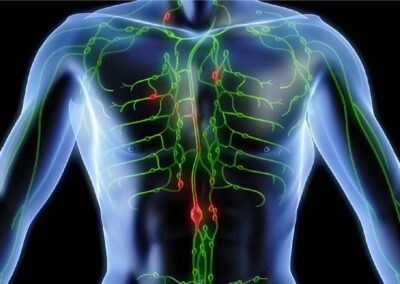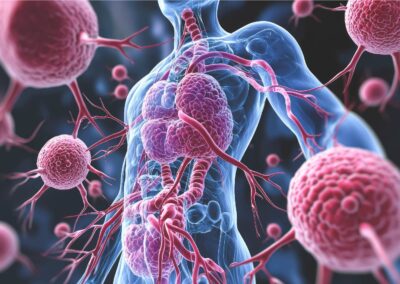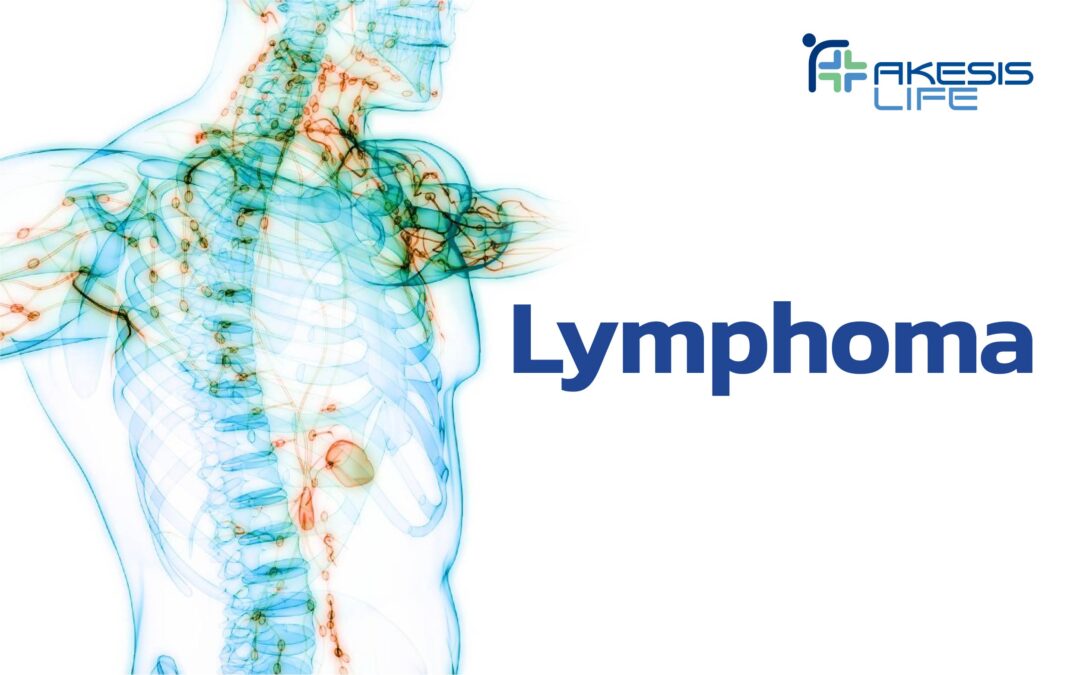Lymphoma is a type of cancer that originates in the cells of the lymphatic system. It is broadly classified into two main types:
- Hodgkin Lymphoma (HL)
- Non-Hodgkin Lymphoma (NHL)
Risk Factors for Lymphoma
- Increasing age
- Weakened or abnormal immune system
- Viral infections, such as Epstein-Barr Virus (EBV)
- Smoking
- Family history of lymphoma
- Excess body weight

Common Symptoms
- Unexplained fever
- Lumps or swollen lymph nodes, especially in the neck, collarbone area, armpits, or groin; in some cases, masses may be found in the chest or abdomen
- Night sweats
- Unexplained weight loss
- Fatigue and loss of appetite
The progression of the disease may vary; some lymphomas are aggressive and progress rapidly, while others are indolent and develop slowly. Certain types of lymphoma are potentially curable or may enter long-term remission.

Diagnosis
Diagnosis is confirmed through biopsy of affected tissue for pathological examination.
Conventional Medical Treatments
Standard treatment for lymphoma focuses on systemic therapies that affect the whole body. These may include:
- Chemotherapy
- Targeted therapy
- Immunotherapy
- Localized radiation therapy
- Cellular therapies such as stem cell transplantation or CAR T-cell therapy

Integrative Therapies in Combination with Standard Treatment
- Ozone Therapy
Helps stimulate immune system function and enhances treatment effectiveness. A stronger immune system may better control viral infections and promote antioxidant production.
Possible side effect: Herxheimer reaction (fever, headache, rash), which is manageable and not dangerous. - Hyperthermia Therapy
Mimics a “false fever” to enhance immune activity. Often used alongside chemotherapy—either on the same day or following chemotherapy—to increase drug penetration into cancerous tissues and accelerate chemical reactions.
Possible side effects: Dizziness, nausea, or vomiting in some patients. - Electro-Lymphatic Therapy (ELT)
A therapy that involves massaging the lymphatic system using a device that emits electrical waves, light, and vibration. It enhances lymphatic flow, reduces waste buildup, and alleviates fatigue. - Light Therapy
Low-level red infrared light may relieve side effects such as peripheral neuropathy, oral mucositis, or skin inflammation caused by chemotherapy.
Other light wavelengths can help improve pain, fatigue, and sleep disturbances after chemotherapy. - Intravenous Nutrition
Used when patients have prolonged inadequate oral intake or severe weight loss (cachexia). - Dietary Adjustments
Avoiding foods that trigger inflammation in the gut and body (food intolerance management). - Lifestyle Modification
Encouraging healthy habits and routines to strengthen the body’s ability to fight disease. - Nutritional Supplements and Extracts
Examples include Vitamin D3, Vitamin C, zinc, garlic, grape seed extract, green tea extract (EGCG), and omega-3 fish oil. - Mistletoe Therapy
Used as a complementary treatment to support the immune system and potentially enhance therapeutic outcomes.


